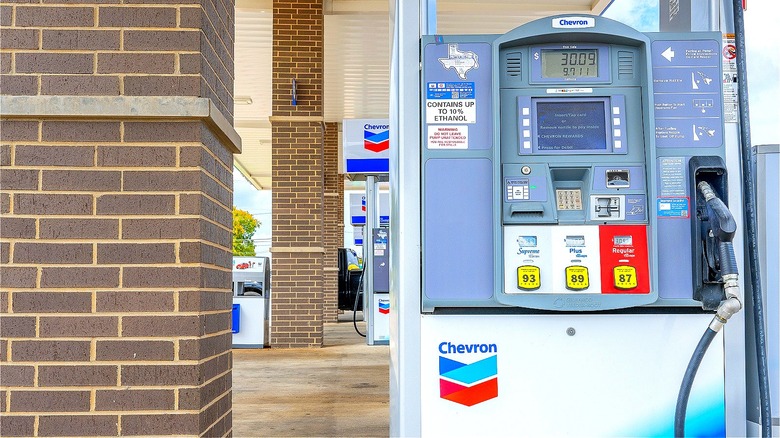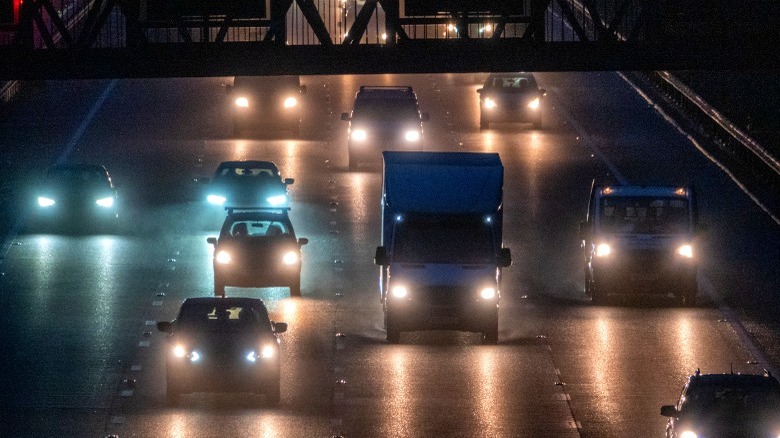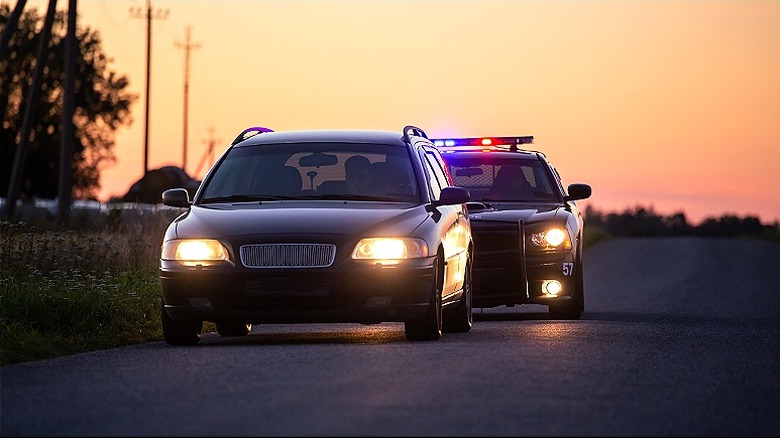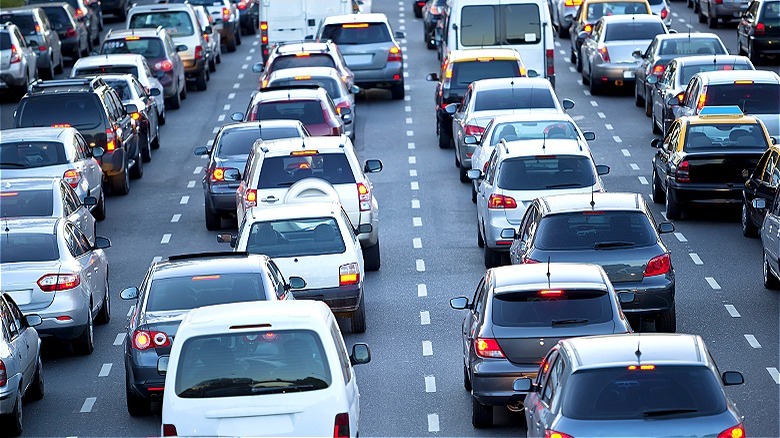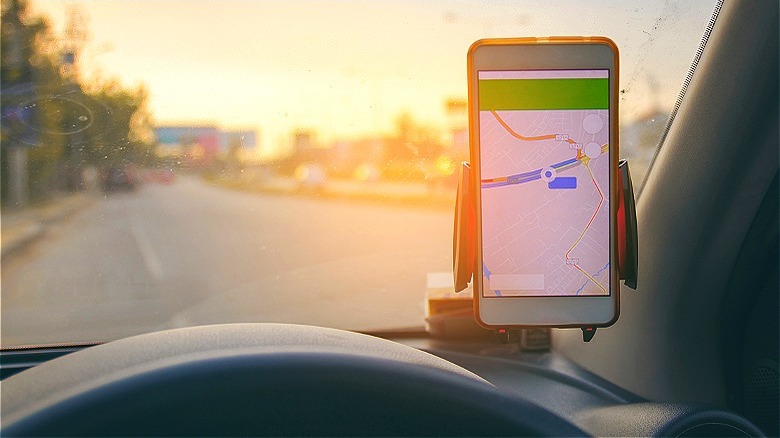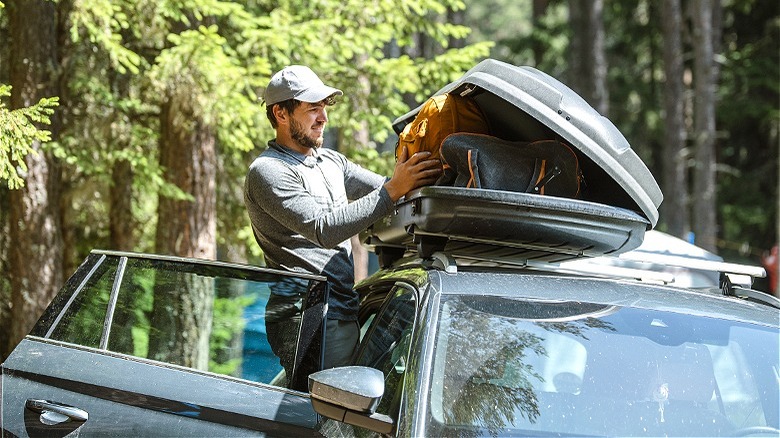Driving Mistakes That Are Costing You At The Gas Pump
According to AAA, the average price of a gallon of gasoline in the United States on February 24, 2024, was ~$3.28. Granted, that's a big improvement for consumers compared to the peak average of $5.02, hit in June 2022. Still, the cost of driving remains elevated from the pre-COVID era, when a gallon of regular unleaded gasoline could be purchased for $2.25 at the beginning of 2019. So what can you do to stretch your gasoline budget today? Sure, splurging on a more fuel-efficient vehicle is always an option, but the high upfront cost of a new car could take a long time to recoup via fuel savings. Instead, make sure your existing car is maximized for fuel efficiency. Keep the engine in a good state of tune with a clean air filter and fresh oil of the recommended viscosity for maximum operating efficiency.
Even more importantly, make sure your tires are inflated to the manufacturer's recommended tire pressure. Under-inflated tires can result in a 0.6% to 3% loss in fuel economy, according to the U.S. Department of Energy. Many tire stores will check and adjust your tire pressure for free or you can spend a dollar or two at your local gas station's air pump for the convenience. Now that your car is primed to achieve the best gas mileage, the rest falls on the driver to maintain good habits. To be sure, there are several practices you'll definitely want to avoid or else pay the price at the pump.
Driving too aggressively
Yes, it can be fun to tear away from a red light or stop sign with the accelerator pinned to the floor and your engine screaming toward redline, but it's also a serious waste of fuel. Jackrabbit starts cause your car's engine to burn far more fuel than it takes to reach the same speed at a more moderate pace. Futher, drivers who tend to accelerate with a heavy foot also tend to brake hard, too. Combined, the Department of Energy says thta these practices result in a 10% to 40% reduction in fuel economy around town and a 15% to 30% mileage hit on the highway.
Besides cutting into your savings at the gas pump, hard acceleration and braking can cause undue wear and tear on your vehicle. In particular, hard braking results in premature wear to brake pads and rotors, which can cost hundreds to replace. Finally, aggressive driving increases the likelihood of being in a collision — either from your own inability to stop in the midst of rapid acceleration, or getting rear-ended as a result of sudden hard-braking.
Going too fast on the highway
During the Malaise Era of the 1970s, the national speed limit was lowered to just 55 miles per hour. The move was ostensively for safety reasons, but many Americans secretly realized that the "double nickel" speed limit also increased fuel economy. Safety or no, this was a necessary move during an oil crisis that resulted in spiking fuel prices, and even gasoline rationing. The Department of Energy explains that every 5 mph driven more than 50 mph is equivalent to 24 cents extra per gallon of gas, assuming a per-gallon price of $3.06.
Still, with modern speed limits on highways hovering at 70 to 80 mph, it's unrealistic to expect a driver today to float along at 20-plus mph under the posted limit. However, try not to get too carried away and drive significantly faster than the already generous contemporary speed limits. Even more importantly, keep your vehicle's speed consistent. On long highway trips, speeding up and slowing down wastes gas. Instead, use your car's cruise control feature to maintain a consistent speed for best fuel economy. As an added benefit, cruise control just might stop you from creeping too far above the speed limit and getting a speeding ticket, which is even pricier than buying extra gas.
Excessive idling
According to the Department of Energy, idling (or letting your car's engine run while stopped) for longer than 10 seconds uses more fuel than shutting down the engine and restarting it. That adds up to ~6 billion gallons of wasted fuel each year, half of which comes from personal vehicles. That's why in recent years, many vehicles come equipped with automatic start/stop systems that shut the engine down at long pauses, like traffic lights, then seamlessly restart the engine when it's time to pull away. Early on, some vehicle owners questioned the durability of constantly starting the engine, but rest assured that cars with an automatic stop/start feature are built to withstand the demand.
If your vehicle is older and doesn't have such technology, it may not be practical or mechanically sound to shut your engine down at every red light, but there's still measures that you can take against excessive idling. To begin, turn your car off while waiting at an ATM or restaurant drive-through lanes. Also, avoid the urge to excessively warm up your vehicle's engine during cold weather. Per experts, 30 seconds is typically enough warm-up time for modern engines before beginning your journey.
Not planning an efficient route
One driving mistake that could be costing you more at the gas pump is not planning out your trips. Rather than make several separate trips, try to consolidate your errands into fewer trips, even perhaps coinciding them with commuting to/from work, if applicable. To determine the most efficient route with several destinations, drivers can try using a mapping app or step it up a notch by downloading one of several free specialty routing apps.
One of the more well-known mapping apps, Google Maps, has a fuel-efficient route mode that is designed to save both energy and money. When getting driving directions from Google Maps, look for the route displaying a leaf icon for the fuel-efficient option. Albeit, these fuel-efficient routes may not always be the fastest, but they'll usually be comprable as far as ETA, and you'll burn less fuel and be more eco-friendly in the process. Even without the help of technology, though, thrifty drivers should try to avoid being on the road at peak traffic times, like morning and evening rush hours, if possible. And by all means, avoid unnecessary backtracking.
Not removing your rooftop tent or cargo box
Yes, overlanding has become a popular fad and the subject of endless Instagram posts, but that rooftop tent on your Subaru is wreaking havoc with its fuel economy. Aerodynamics are an integral part of fuel efficiency and that large lump on your roof — whether it's a collapsible tent or storage box for luggage or outdoor gear — is hugely disrupting the airflow over the top of your vehicle, creating aerodynamic drag.
Consumer Reports in 2020 tested a late-model Nissan Altima sedan with and without a rooftop storage pod and the results were stunning. With a luggage rack alone, the sedan's mileage dropped by nearly 11%. With the storage pod attached to the luggage rack, the drop in miles per gallon was a precipitous 19%, equal to a 9 mpg loss. The same test on a Toyota RAV4 SUV revealed mileage losses of 2% and 13%, respectively. Finally, keep in mind that the test was performed empty. Adding the additional weight of contents to the vehicle would have yielded even more disastrous results.
Admittedly, going through the hassle of removing and reinstalling a rooftop tent or cargo pod isn't something drivers will want to endure every single weekend. However, do consider removing this type of gear from your car if no adventures are planned for a few weeks or especially during longer periods of potential disuse, like during the winter in cold climates. As a bonus, your gear will last longer too, protected from the sun, wind, and potential theft.
